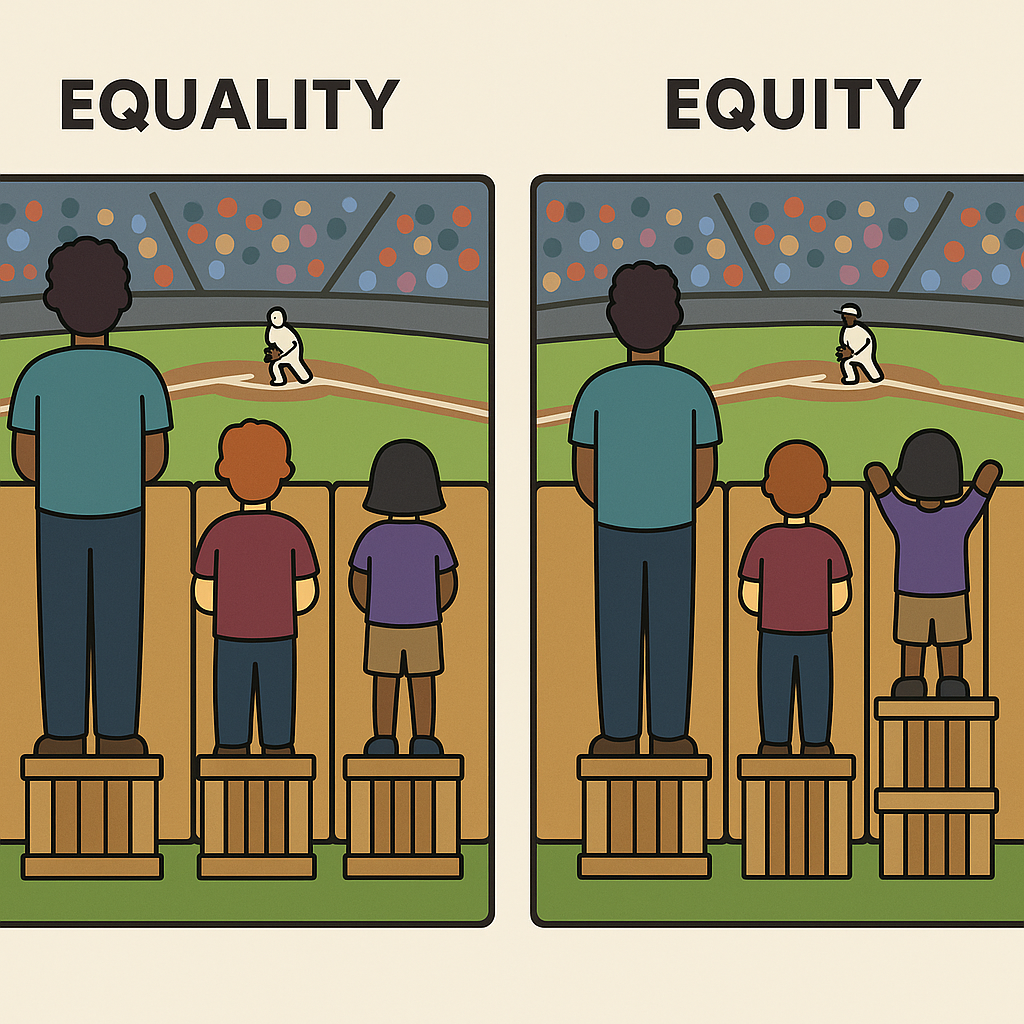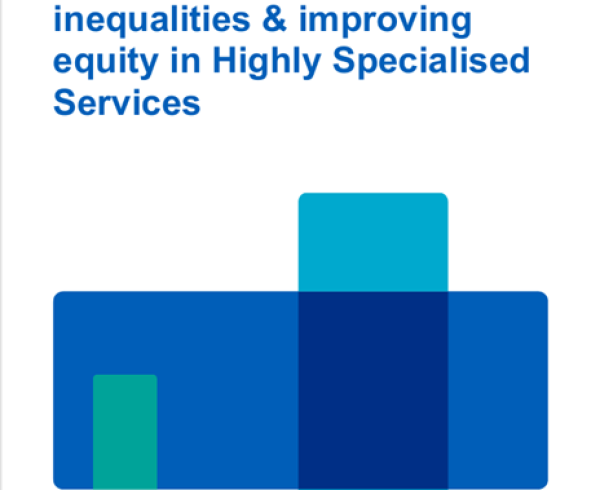
Equality vs. Equity – What’s the Difference?
Equality
Equality means giving everyone the same resources or opportunities.
It assumes that everyone starts from the same place and needs the same level of support. While this sounds fair in principle, it often doesn’t lead to fair outcomes because people face different barriers.
Equity
Equity means giving people the support they need to reach the same level of opportunity.
It recognises that people and communities face different challenges, and it adjusts support accordingly. Equity is about fairness in practice, not just fairness in theory.
Equality gives everyone the same support.
Equity gives people the support they need to achieve the same level of health.
Health Examples of Equality vs Equity
1. Access to GP Appointments
- Equality:
Every patient is offered the same 9am–5pm appointment slots.
Problem: People who work shifts, care for others, or rely on public transport may not be able to attend. - Equity:
Flexible appointment options are offered — evenings, weekends, telephone or video consultations.
Impact: People with different needs have a fair chance to access care.
2. Public Health Information
- Equality:
Health advice is published only in English on printed leaflets.
Problem: Many people may not read English confidently or may prefer visual formats. - Equity:
Information is provided in multiple languages, plain English, easy-read formats, videos, and images.
Impact: Everyone can understand the advice and act on it.
3. Screening and Early Detection
- Equality:
All eligible people receive the same standard screening invitation by post.
Problem: People experiencing homelessness or unstable housing may never receive it. - Equity:
Outreach teams work in community settings, mobile clinics visit neighbourhoods with low uptake, and reminders are sent by text.
Impact: Screening reaches people who are most at risk, reducing preventable illness.
4. Mental Health Support
- Equality:
One type of talking therapy is offered to everyone.
Problem: Trauma, culture, age, stigma, or life experiences may influence whether that support feels accessible or effective. - Equity:
A range of therapies is made available — culturally informed support, youth-focused services, group sessions, trauma-specific options.
Impact: People can access the type of support that works for them.
5. Healthy Lifestyle Opportunities
- Equality:
A community offers the same free gym membership to all residents.
Problem: People with mobility challenges, caring responsibilities, or limited transport still can’t use the gym. - Equity:
The community provides home-based exercise programmes, accessible classes, childcare options, and safe local walking groups.
Impact: Everyone has a realistic opportunity to be active, whatever their circumstances.
6. Maternity Care
- Equality:
All pregnant women receive the same standard midwife schedule.
Problem: Women from deprived communities or diverse communities may face higher risk but receive no additional support. - Equity:
Additional appointments, continuity of carer, personalised risk assessments, and targeted support are offered to those with higher needs.
Impact: Safer pregnancies and healthier outcomes for mothers and babies.






Leave a Comment